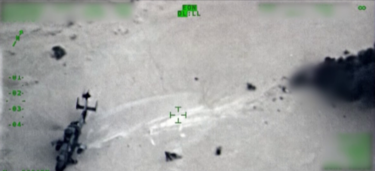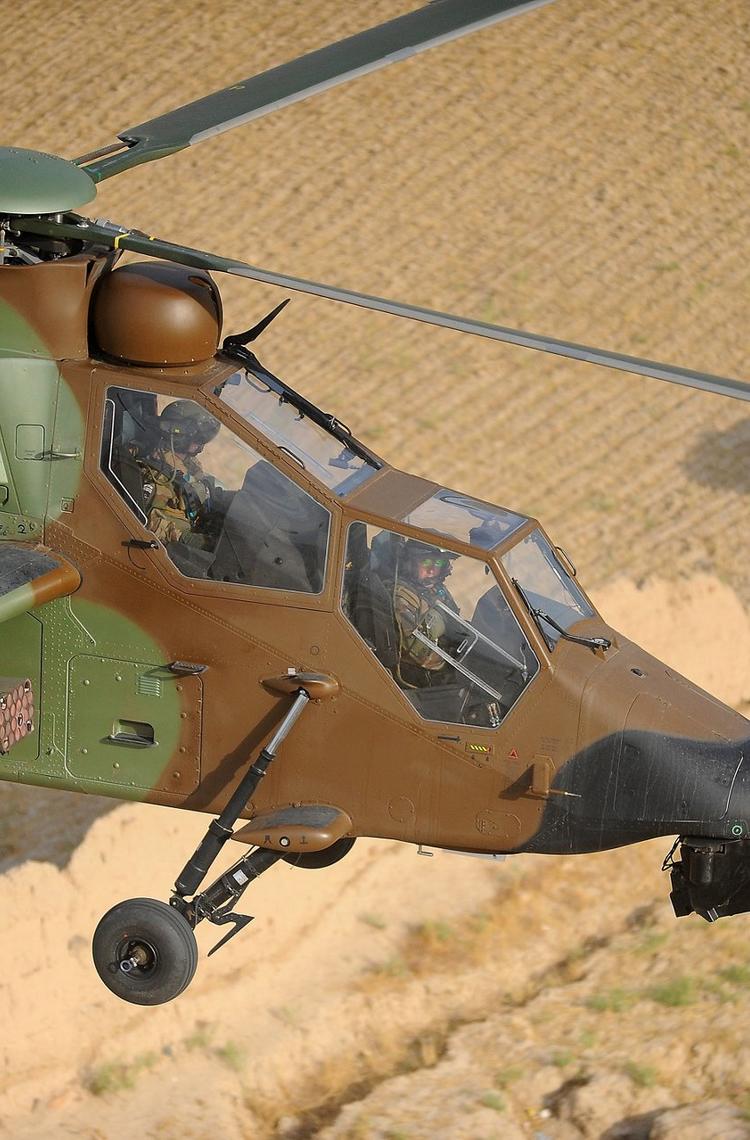Sahel, 2019. A Gazelle is shot down in combat and the daring rescue of its crew by a Tiger leads to an incredible adventure. One year later, survivors and crew tell their story.
It’s June 2019, and French armed forces have launched Operation Aconit, a major push in the Liptako region, a hotbed of armed terrorist groups. Around 20 helicopters are deployed, Gazelles and Tigers for reconnaissance and attack missions and NH90 Caïmans and Cougars used to transport and drop commandos. The three British CH-47s based in Gao are also standing by to provide logistical support.
The enemy on the run
“In the first two weeks of the operation, we had little contact with the armed terrorist groups who dug in and laid low,” explains Colonel Meunier, commander of the Tactical Desert Air Combat Group (Groupement Tactique Désert Aérocombat – GTDA). “The situation quickly shifted on the night of 13 to 14 June. After tracking a motorbike all day, a surveillance drone spotted a group of about a dozen men in a remote forest. No fire…very suspicious.”
Around 40 mountain commandos, travelling in four Caïmans, are sent to assess the situation, about 15 minutes after two Tigers. The first shots ring out as soon as the commandos land, leaving no doubt: the enemy is on the run. It is 2300 at night level 5: no moon or residual illumination.
A gazelle is hit
“Fighting lasted all night, it was difficult, intense and covered a wide area,” says Colonel Meunier. “Our commandos were advancing on a well-equipped and determined enemy.” The Tiger patrols take turns providing covering fire.
By early morning, around 30 insurgents have been taken out. Firing continues, but the battle is less intense. Two Gazelles are brought in, taking advantage of the first light of dawn: a Viviane equipped with HOT missiles and a ‘TE’ Gazelle with a sniper on board. These two helicopters replace the two Tigers, one of which stays behind a few minutes to transmit instructions.
“I was heading into my 10th flight hour and my third rotation in the combat zone since the night before,” says ‘Paco’, commander of this Tiger. “We were glad to return to Ménaka for some well-earned rest…”
Paco identifies the woods where a man has been sighted, apparently unarmed. The TE Gazelle makes a first pass at about 200 metres from the boundary, without spotting anything. During the second pass, 10 metres above the ground, the team hears a horribly familiar sound, like gravel slamming against the fuselage. They are hit…
The engine dies, leaving the pilot just enough time to level out the helicopter before impact. After a long slide, the helicopter hits a mound of earth and flips over. The Tiger crew see the Gazelle hit the ground and burst into flames.
A radio message goes out immediately: “The Gazelle is down; the Gazelle is down…!”

“We’re going in to get them!”
When the dust clears, the Gazelle’s three crew members are visible and still moving. They are all alive, but injured. Without hesitation, the commander, Paco, signals the pilot: “Put her down, we’re going in to get them!”
The ‘TIGREX’ (Tiger Extraction) procedure was developed a few years previously during operations in Afghanistan. It was, however, only designed for two men who are supposed to stand on a side step and wrap their survival strap around the landing gear strut, on either side of the cockpit.
Less than 90 seconds after the crash, the Tiger with its rotor turning lands around 30 metres from the burning wreckage. A maritime Atlantique 2 is filming the scene from a moderate altitude: the sniper, who was the least injured during the crash, drags the Gazelle’s pilot towards the Tiger. Incapable of walking, the commander tries to roll himself away from the burning helicopter.
The commando does what he can: he positions the first man on the right landing gear strut, the second on the left gear strut. He then climbs onto the right gun arm of the helicopter, above the rocket cradle. Only the commander is secured: as the survival straps of both pilot and commando have been damaged or lost in the accident. All they can do is lock their arms, hold on and not let go. A real challenge for two injured men.
The Tiger’s crew, who know what danger all three men are in, are living their own nightmare. The tension on board is palpable and over the intercom the pilot lets his anxiety show;
“Damn…they don’t have straps…” he says.
“They’re too badly hurt, they won’t be able to hold on,” says Paco nervously.
“Do you want to go down and tie them on?” the pilot asks.
Weighing up the situation, the commander decides that getting off the helicopter puts everyone at greater risk and would prevent an emergency take off in the face of immediate danger. His intuition tells him that the three survivors can hang on for a few minutes, that they have the strength to pull through. “Forget that, let’s get going …” He calmly gives the order: “Come on, let’s take off and head for the helicopter lift zone.”
The second Gazelle contacts the Tiger:
“Are you picking up two?”
“I’m taking three… we’re trying for three.”
The Tiger pilot focuses, flying low and slow. A few centimetres away, separated by the plexiglass canopy, he can see his two comrades in pain. "Hold on guys, just a few more seconds… hold on…" With the two men positioned on the forward landing gear strut, the helicopter is off balance. Focused on his flying, the pilot ignores this. The Tiger takes everything he throws at it without complaint. After four minutes in flight, maybe five, the helicpter lands near the commandos. The doctor on duty immediately takes charge of the injured men and prepares them for evacuation. After a few more minutes of waiting, a Cougar medevac lands to transport them straight to Gao.
Today, all three men have resumed their full commando and pilot duties.
A veteran of three wars
In 2009, France deployed the Tiger in Afghanistan. Two years later, the helicopters fought in Libya during Operation Harmattan: flying daring raids from assault ships positioned off the Libyan coast to support the tactical situation on the ground and enable the defeat of forces loyal to Colonel Gaddafi. The Tiger returned to the African continent in 2013 in Operation Serval and Operation Barkhane, when needed to save Mali from a jihadist offensive. Since then, the helicopters haven’t left the country, with HAD models supporting and progressively replacing the original HAP models.
For seven years, Tigers have criss-crossed the Sahel, bringing firepower and the reliability of a helicopter well able to take the blows and damage of war. No one counts the bullet holes in helicopters that always bring their teams home, safe and sound.
The Tiger’s firepower, cannon, rockets, missiles and shooting accuracy, by day and by night, are obvious sources of strength.
However, the aircraft also wins points for its endurance. Teams are quick to point out that with two extra tanks (355 litres each), the HAP Tiger has enough fuel for four and a half hours of flight. More powerful but also heavier due to additional armour plating, the HAD version has enough fuel for four hours. Communication equipment on the aircraft is also remarkable, enabling it to maintain constant contact with ground troops and an overview of the tactical situation.
Originally designed for combat in central Europe, the Tiger is well equipped to fight and excels in extreme heat… protecting its teams whatever the theatre of operation. Another benefit rarely cited but essential in hot climates, is its strong and stable landing gear, able to handle the hardest landings but also, and most importantly, taking off at maximum weight.
